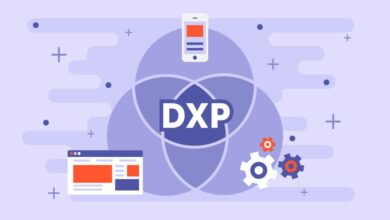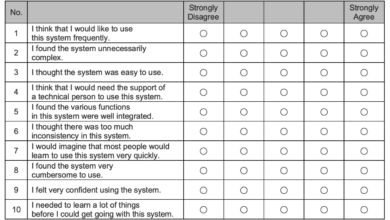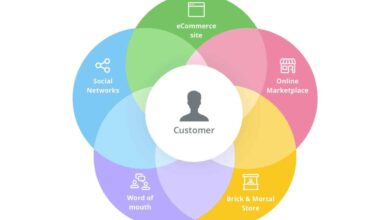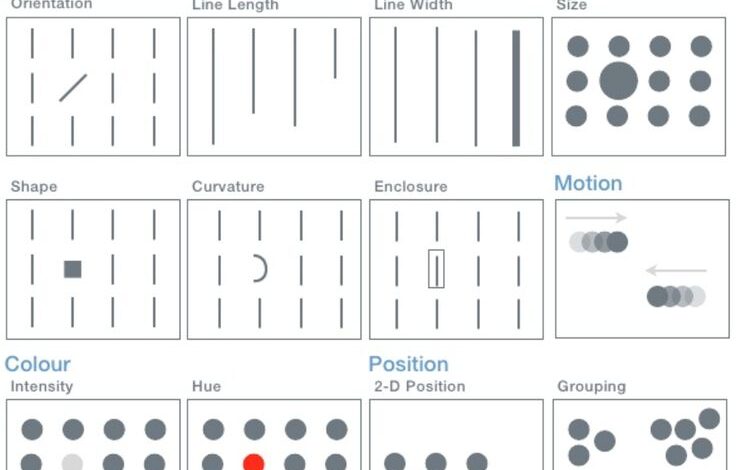
Unica Interact Real Time Attributes A Deep Dive
Unica interact real time attributes – Unica Interact real-time attributes: Wow, what a game-changer! This isn’t just about data; it’s about using that data to create seriously impactful, personalized marketing experiences. Imagine knowing exactly what your customer wants
-right now* and tailoring your message accordingly – that’s the power we’re exploring. We’ll delve into how Unica Interact makes this real-time magic happen, from data sources to campaign optimization and everything in between.
We’ll unpack the core components of Unica Interact’s real-time attribute capabilities, exploring the different types of attributes supported and how they’re used to boost marketing campaign success. We’ll also look at how this real-time approach compares to traditional batch processing, examine the data sources and integration methods, and discuss best practices for ensuring data quality and consistency. Get ready for a deep dive into the world of personalized marketing!
Defining “Unica Interact Real Time Attributes”
Unica Interact’s real-time attribute capabilities are a powerful feature allowing marketers to personalize interactions with customers based on the most up-to-the-minute information. This dynamic approach contrasts sharply with traditional batch processing, enabling significantly more relevant and timely messaging. Understanding these attributes is key to leveraging the full potential of Unica Interact for effective marketing campaigns.Real-time attributes in Unica Interact represent dynamic data points about a customer that are updated frequently, often instantaneously.
These attributes are crucial for delivering personalized experiences because they reflect the customer’s current behavior, preferences, and context. This contrasts with batch-processed attributes, which are updated less frequently and might not reflect the customer’s current situation accurately.
Core Components of Real-Time Attributes
The core of Unica Interact’s real-time attribute functionality lies in its ability to integrate with various data sources and process this information in real-time. This involves a robust data pipeline that ingests data, cleanses it, and makes it readily available for use within marketing campaigns. Key components include the data ingestion mechanism (e.g., APIs, streaming data platforms), a real-time processing engine, and a data store optimized for fast retrieval.
The system also incorporates mechanisms for data governance and security, ensuring the integrity and privacy of customer information.
Types of Real-Time Attributes
Unica Interact supports a variety of real-time attribute types, allowing for a high degree of personalization. These include:
- Website Activity: Real-time tracking of a customer’s browsing behavior, including pages visited, products viewed, and items added to a cart.
- Application Usage: Data reflecting a customer’s interactions with a mobile app, such as features used, purchases made, and in-app messages viewed.
- Location Data: GPS coordinates or IP address-based location information, enabling geographically targeted messaging and offers.
- Social Media Activity: Real-time updates on customer engagement on social media platforms, such as posts, likes, and shares.
- Transactional Data: Instantaneous updates on customer transactions, such as purchases, returns, and support interactions.
Examples of Real-Time Attribute Usage
Imagine a customer browsing an e-commerce website. Using real-time attributes, Unica Interact can identify the specific products they’re viewing and immediately display a personalized banner ad offering a discount on those items or related products. Similarly, if a customer abandons their shopping cart, a real-time triggered email can remind them of their forgotten items, increasing the likelihood of a purchase.
For a mobile app, real-time attributes could track in-app behavior to personalize recommendations or offer support based on the user’s current actions. Location-based attributes can trigger proximity-based offers, such as a discount at a nearby store when a customer is within a certain radius.
Real-Time Attributes vs. Batch-Processed Attributes
The following table highlights the key differences:
| Feature | Real-Time Attributes | Batch-Processed Attributes |
|---|---|---|
| Update Frequency | Near instantaneous or very frequent | Periodic (e.g., daily, weekly) |
| Data Freshness | Always current | Potentially outdated |
| Campaign Relevance | Highly relevant, personalized interactions | Less relevant, generic interactions |
| System Complexity | More complex infrastructure required | Simpler infrastructure |
Data Sources and Integration
Unica Interact’s real-time attribute processing relies on a robust and diverse range of data sources to build a comprehensive customer profile. The effectiveness of this system hinges on the seamless integration of these sources and the efficient processing of the resulting data stream. This section delves into the specifics of data sources, integration methods, data flow, and best practices for maintaining data quality.
The power of Unica Interact’s real-time capabilities comes from its ability to ingest and process data from various sources, both internal and external to the organization. This allows for a holistic view of the customer, incorporating transactional data, behavioral data, and even third-party information.
Data Sources
Unica Interact can integrate with a wide array of data sources, including CRM systems (like Salesforce or SAP CRM), transactional databases (containing purchase history, website activity, etc.), marketing automation platforms, and external data providers offering demographic, geographic, and behavioral insights. For example, transactional data from an e-commerce platform might detail individual purchases, while CRM data provides contact information and interaction history.
Unica Interact’s real-time attributes are a game-changer for dynamic application development. The ability to instantly reflect changes is crucial, and this is where understanding the future of Domino app development comes in. Check out this insightful article on domino app dev the low code and pro code future to see how these capabilities are shaping the landscape.
Ultimately, leveraging real-time attributes in Unica Interact, alongside these evolving development methodologies, will lead to more responsive and engaging applications.
External data sources might add information such as credit scores or lifestyle preferences. The specific sources integrated will depend on the individual organization’s needs and data infrastructure.
Integration Methods
Several methods facilitate the integration of these diverse data sources. Real-time data streaming via APIs (Application Programming Interfaces) is a common approach, enabling continuous data flow into the Unica Interact system. Batch processing can also be employed for less time-sensitive data, where large datasets are processed and updated periodically. Data transformation is crucial, ensuring data consistency and compatibility with Unica Interact’s internal structure.
This often involves data cleaning, standardization, and enrichment. For example, data from different sources might use different formats for addresses or dates; transformation ensures uniformity before processing.
Data Flow and Transformation Diagram
Imagine a pipeline. First, raw data from various sources (CRM, transactional databases, external providers) enters the pipeline. A data ingestion module receives this data, performing initial validation and error handling. Next, a data transformation module cleans, standardizes, and enriches the data. This might involve data deduplication, address standardization, or appending external data points.
Then, the transformed data flows into a real-time attribute processing engine. This engine calculates and updates the real-time attributes based on defined rules and algorithms. Finally, the updated attributes are stored in a central repository, readily accessible for use in marketing campaigns and other applications. The entire process is monitored and logged for auditing and troubleshooting.
Data Quality and Consistency Best Practices
Maintaining data quality and consistency is paramount for reliable real-time attribute processing. This requires a multifaceted approach. Regular data validation checks should be implemented to identify and correct errors. Data governance policies should be established and enforced to ensure data accuracy and consistency across all sources. Data profiling helps understand the characteristics of the data, allowing for better cleaning and transformation strategies.
Furthermore, implementing robust error handling and logging mechanisms enables quick identification and resolution of data issues. Finally, regular audits and reviews of the entire process help ensure ongoing data quality.
Real-time Attribute Applications in Marketing

Real-time attributes revolutionize marketing by enabling hyper-personalization. Instead of relying on static customer profiles, marketers can now access and utilize up-to-the-second information about individual customer behavior, preferences, and context, leading to significantly improved campaign effectiveness and ROI. This dynamic approach allows for more relevant and timely interactions, fostering stronger customer relationships and driving conversions.
Enhanced Personalization in Marketing Campaigns
Real-time attributes allow marketers to tailor messaging and offers with unprecedented precision. By accessing data points like current location, browsing history, recent purchases, or even real-time sentiment expressed on social media, marketers can craft highly personalized experiences that resonate deeply with individual customers. This goes beyond simple segmentation; it’s about delivering the right message, at the right time, through the right channel, to the right person.
The result is increased engagement, improved conversion rates, and a more positive customer journey.
Use Cases for Improved Campaign Performance, Unica interact real time attributes
Several specific use cases demonstrate the power of real-time attributes in boosting campaign performance. For example, an e-commerce site can use real-time location data to display nearby store locations or offer localized promotions. A travel company can dynamically adjust flight and hotel recommendations based on a customer’s current search activity and past travel patterns. Financial institutions can use real-time credit score updates to personalize loan offers or adjust credit limits.
These are just a few examples of how real-time data empowers marketers to optimize their campaigns for maximum impact.
Real-time Attributes Across Marketing Channels
The impact of real-time attributes varies across different marketing channels, but the improvements are consistently significant. In email marketing, real-time attributes allow for dynamic content personalization, ensuring that each recipient receives a message tailored to their specific interests and recent activities. On websites, real-time attributes power personalized recommendations, targeted ads, and dynamic pricing. In mobile marketing, real-time location data enables geofencing campaigns and location-based promotions.
Across all channels, the core benefit remains the same: increased relevance and engagement.
Examples of Successful Campaigns Leveraging Real-time Attributes
The following examples illustrate successful marketing campaigns that effectively utilized real-time attributes:
- Amazon’s product recommendations: Amazon leverages browsing history, purchase history, and other real-time data to suggest relevant products to individual customers, significantly increasing sales conversions.
- Netflix’s personalized recommendations: Netflix uses viewing history and other data points to suggest movies and shows that align with individual user preferences, leading to higher user engagement and retention.
- Starbucks’ mobile ordering and rewards program: Starbucks uses real-time location data and purchase history to send personalized offers and reminders to customers, driving app usage and repeat business.
Performance and Scalability: Unica Interact Real Time Attributes
Unica Interact’s real-time attribute processing engine needs to be robust and efficient to handle the demands of modern marketing. The system’s ability to process vast amounts of data quickly and reliably is crucial for delivering personalized experiences in real-time. This section delves into the architecture, data handling capabilities, reliability mechanisms, and optimization strategies that ensure Unica Interact’s performance and scalability.Unica Interact’s real-time attribute processing leverages a distributed architecture designed for high throughput and low latency.
This architecture typically involves multiple interconnected servers, each responsible for specific tasks like data ingestion, transformation, enrichment, and attribute storage. This distributed approach allows the system to scale horizontally by adding more servers as needed to accommodate increasing data volumes and transaction rates. Data is often partitioned across these servers to optimize processing efficiency. Furthermore, sophisticated caching mechanisms are employed to minimize database access times and improve response speeds.
The system also utilizes load balancing techniques to distribute workloads evenly across the servers, preventing bottlenecks and ensuring consistent performance.
Architecture of the Real-Time Attribute Processing Engine
The core of Unica Interact’s real-time attribute processing engine is a highly scalable and distributed system. It typically utilizes a message queue system, such as Kafka or RabbitMQ, to handle the high volume of incoming data streams. This ensures decoupling between data ingestion and processing, enabling asynchronous operations and enhanced fault tolerance. Data is then processed by a cluster of processing nodes that perform data transformation, enrichment, and real-time attribute calculation.
These nodes often utilize in-memory data grids for fast data access and processing. Finally, the processed attributes are stored in a high-performance database, often a NoSQL database optimized for fast read and write operations, readily accessible for real-time marketing applications. This architecture enables horizontal scalability, allowing the system to handle exponentially increasing data volumes and transaction rates by simply adding more processing nodes and storage capacity.
Handling High Volumes of Data and Transactions
To manage high volumes of data and transactions, Unica Interact employs several strategies. Data ingestion is optimized through parallel processing and batching techniques. Data transformation utilizes efficient algorithms and optimized data structures to minimize processing time. The system leverages distributed caching to reduce the load on the database. For example, frequently accessed attributes are cached in memory, reducing the need for repeated database queries.
Load balancing distributes the workload across multiple servers, preventing any single server from becoming overloaded. Furthermore, the system uses techniques like sharding and partitioning to distribute the data across multiple databases, further improving performance and scalability. This approach ensures that even with millions of transactions per second, the system remains responsive and efficient.
Ensuring System Reliability and Availability
Reliability and availability are paramount for real-time applications. Unica Interact achieves this through redundancy and fault tolerance mechanisms. Multiple servers are used for each component of the system, allowing the system to continue operating even if one or more servers fail. Data replication ensures data is available even if a storage node fails. Regular backups and disaster recovery plans are implemented to protect against data loss.
The system also uses monitoring and alerting tools to detect and respond to potential problems quickly. These monitoring tools provide real-time insights into the system’s health and performance, enabling proactive identification and resolution of issues before they impact users. Furthermore, automated failover mechanisms are implemented to ensure seamless transition to backup systems in case of failures.
Optimizing Real-Time Attribute Processing Performance
Optimizing the performance of real-time attribute processing involves several key strategies. Data cleansing and preprocessing should be performed efficiently to reduce the load on the processing nodes. Choosing appropriate data structures and algorithms for data transformation is critical. Caching frequently accessed attributes significantly improves response times. Regularly reviewing and optimizing database queries can also enhance performance.
Load testing and performance monitoring provide valuable insights for identifying bottlenecks and areas for improvement. For instance, load testing can reveal the system’s capacity and identify potential scaling issues before they occur in a production environment. Continuous monitoring and optimization are crucial for maintaining peak performance as data volumes and transaction rates increase. Regular performance tuning and capacity planning ensure the system can handle future growth and maintain optimal performance levels.
Security and Privacy Considerations
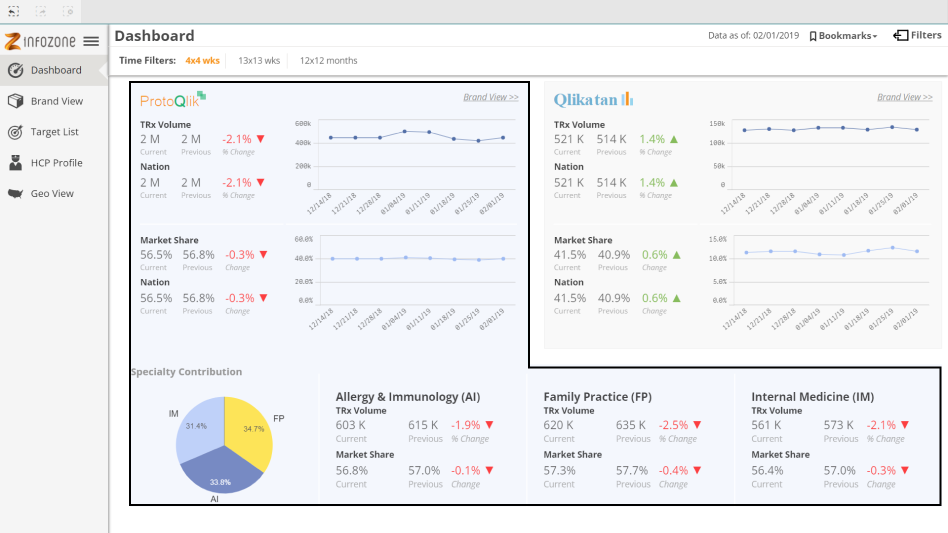
Using Unica Interact’s real-time attributes offers significant marketing advantages, but it’s crucial to address the inherent security and privacy implications. Robust security measures are essential to protect sensitive customer data and ensure compliance with relevant regulations. Failing to do so can lead to data breaches, reputational damage, and hefty fines.Protecting customer data is paramount. This involves a multi-layered approach encompassing technical safeguards, robust data governance policies, and employee training.
The privacy of individuals must be respected at every stage of the process, from data collection to attribute usage and eventual disposal. Understanding and adhering to regulations like GDPR, CCPA, and others is non-negotiable.
Data Security Measures
Unica Interact employs a range of security measures to protect real-time attributes. These include data encryption both in transit and at rest, access control mechanisms limiting data access to authorized personnel only, regular security audits to identify and address vulnerabilities, and intrusion detection systems to monitor for suspicious activity. Furthermore, the system utilizes robust authentication protocols to verify user identities before granting access to sensitive data.
This layered approach minimizes the risk of unauthorized access or data breaches.
Privacy Implications of Real-Time Attribute Usage
The use of real-time attributes in marketing raises several privacy concerns. Collecting and processing personal data requires transparency and user consent. Marketers must clearly inform individuals about the types of data being collected, how it will be used, and with whom it might be shared. Data minimization is also critical; only the necessary data should be collected and retained.
Furthermore, the potential for profiling and targeted advertising based on real-time attributes necessitates careful consideration of the ethical implications and potential for bias. For example, using location data to target ads might inadvertently discriminate against certain demographics.
Compliance Challenges
Meeting compliance requirements for data privacy and security is a significant challenge when working with real-time attributes. Regulations like GDPR and CCPA impose strict rules on data processing, requiring explicit consent, data portability rights, and the ability for individuals to access, correct, or delete their data. Meeting these requirements necessitates meticulous record-keeping, transparent data processing practices, and the implementation of robust data governance frameworks.
Non-compliance can result in substantial fines and reputational damage. For instance, a company failing to obtain proper consent for data processing under GDPR could face fines up to €20 million or 4% of annual global turnover.
Best Practices for Data Security and Privacy
Implementing a comprehensive strategy for data security and privacy is crucial. A proactive approach is essential, not merely reactive.
- Data Minimization: Collect only the necessary data for the specific marketing purpose.
- Transparency and Consent: Obtain explicit and informed consent from individuals before collecting and processing their data.
- Data Encryption: Encrypt data both in transit and at rest to protect against unauthorized access.
- Access Control: Implement robust access control mechanisms to limit data access to authorized personnel only.
- Regular Security Audits: Conduct regular security audits to identify and address vulnerabilities.
- Intrusion Detection Systems: Utilize intrusion detection systems to monitor for suspicious activity.
- Data Retention Policies: Establish clear data retention policies and securely delete data when it’s no longer needed.
- Employee Training: Provide regular training to employees on data security and privacy best practices.
- Compliance Monitoring: Continuously monitor compliance with relevant data privacy and security regulations.
- Incident Response Plan: Develop and regularly test an incident response plan to handle data breaches or security incidents.
Future Trends and Developments
The landscape of real-time attribute capabilities in marketing automation is poised for significant transformation. We’re moving beyond simple data enrichment towards a future where AI and machine learning play a central role in interpreting and acting upon this information, creating truly personalized and predictive marketing experiences. This evolution will be driven by advancements in data processing, integration, and the overall sophistication of marketing platforms.The increasing volume and velocity of data necessitate more efficient and scalable processing techniques.
This will require a shift towards cloud-based solutions, leveraging distributed computing architectures and advanced data streaming technologies to handle the ever-growing influx of real-time information. Furthermore, the integration of real-time attributes with other emerging technologies will unlock new levels of marketing personalization and effectiveness.
Enhanced AI and Machine Learning Integration
The integration of AI and machine learning will be paramount in the future of real-time attributes. AI algorithms can analyze vast datasets of real-time attributes to identify patterns, predict customer behavior, and automate marketing actions. For example, an AI model might predict the likelihood of a customer churning based on real-time browsing behavior and purchase history, triggering a personalized retention campaign.
This predictive capability will move beyond simple segmentation to highly personalized, individual-level marketing. Machine learning will also optimize the very process of attribute collection and processing, identifying the most valuable attributes and automatically adjusting data pipelines for maximum efficiency. Imagine a system that learns which data sources provide the most accurate predictions and automatically prioritizes those sources for processing.
The Rise of Privacy-Preserving Technologies
As concerns around data privacy intensify, the use of privacy-preserving technologies will become increasingly important. Differential privacy, federated learning, and homomorphic encryption are examples of techniques that allow for the analysis of sensitive data without compromising individual privacy. This is crucial for maintaining consumer trust and complying with evolving regulations like GDPR and CCPA. Marketing platforms will need to incorporate these technologies to ensure responsible and ethical use of real-time attributes.
For instance, a platform might use federated learning to train a model on data distributed across multiple organizations without directly sharing sensitive customer information.
Challenges and Opportunities
The future of real-time attributes presents both challenges and opportunities. One significant challenge is ensuring data quality and accuracy. Real-time data is inherently noisy and prone to errors. Robust data validation and cleansing techniques will be critical to avoid misleading insights and ineffective marketing campaigns. Another challenge lies in managing the complexity of integrating multiple data sources and processing real-time information at scale.
This requires sophisticated infrastructure and skilled personnel. However, the opportunities are equally significant. Real-time attributes can power hyper-personalized marketing experiences, leading to improved customer engagement, increased conversion rates, and a stronger return on investment. The ability to predict customer behavior and proactively address their needs will become a key competitive advantage.
Integration with Emerging Technologies
Real-time attributes will seamlessly integrate with other emerging technologies such as the Internet of Things (IoT) and blockchain. IoT devices generate a wealth of real-time data about customer behavior and preferences, providing valuable context for marketing campaigns. For example, real-time location data from a customer’s smartphone could trigger a location-based offer. Blockchain technology can enhance data security and transparency, ensuring the integrity of real-time attributes and facilitating secure data sharing between organizations.
Imagine a system where customer consent and data usage are transparently recorded on a blockchain, providing a verifiable audit trail. This increased transparency will be crucial for building and maintaining trust with customers.
Conclusive Thoughts
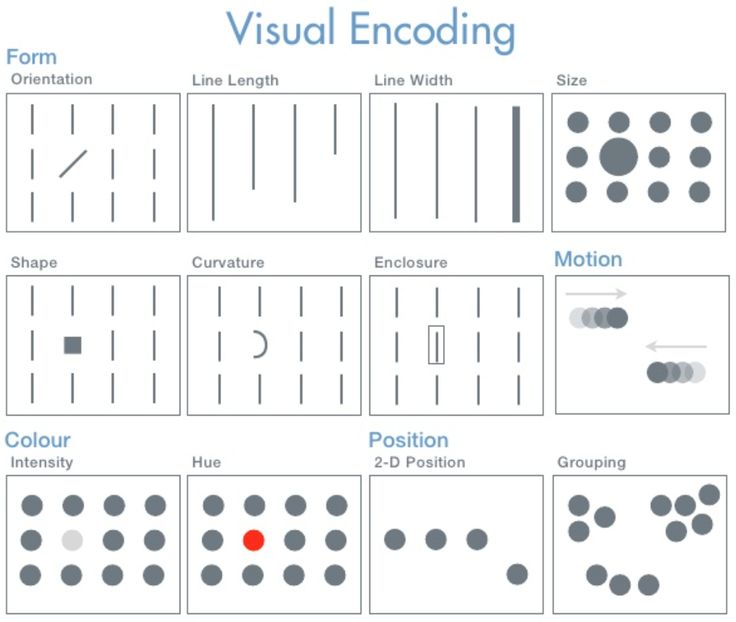
So, there you have it – a whirlwind tour of Unica Interact’s real-time attributes! From understanding the core functionality and data integration to exploring successful campaign examples and future trends, we’ve covered a lot of ground. The key takeaway? Real-time attributes aren’t just a nice-to-have; they’re a must-have for anyone serious about creating truly personalized and effective marketing campaigns.
The ability to react instantly to customer behavior is no longer a luxury – it’s the new standard. Are you ready to leverage this power?
FAQ Insights
What are the potential downsides of using real-time attributes?
While powerful, real-time attributes require robust infrastructure and careful management. Data privacy concerns, increased complexity, and the potential for system overload are all considerations.
How does Unica Interact handle data security with real-time attributes?
Unica Interact employs various security measures, including encryption, access controls, and regular security audits to protect sensitive data. Specific details would depend on the implementation and customer configuration.
What kind of training is needed to effectively use Unica Interact’s real-time attributes?
Training needs vary depending on user roles and responsibilities. However, a solid understanding of marketing principles, data analysis, and the Unica Interact platform is generally required.
Can Unica Interact’s real-time attributes integrate with other marketing tools?
Yes, Unica Interact offers various integration options with other marketing tools and platforms, allowing for a more holistic marketing approach.
